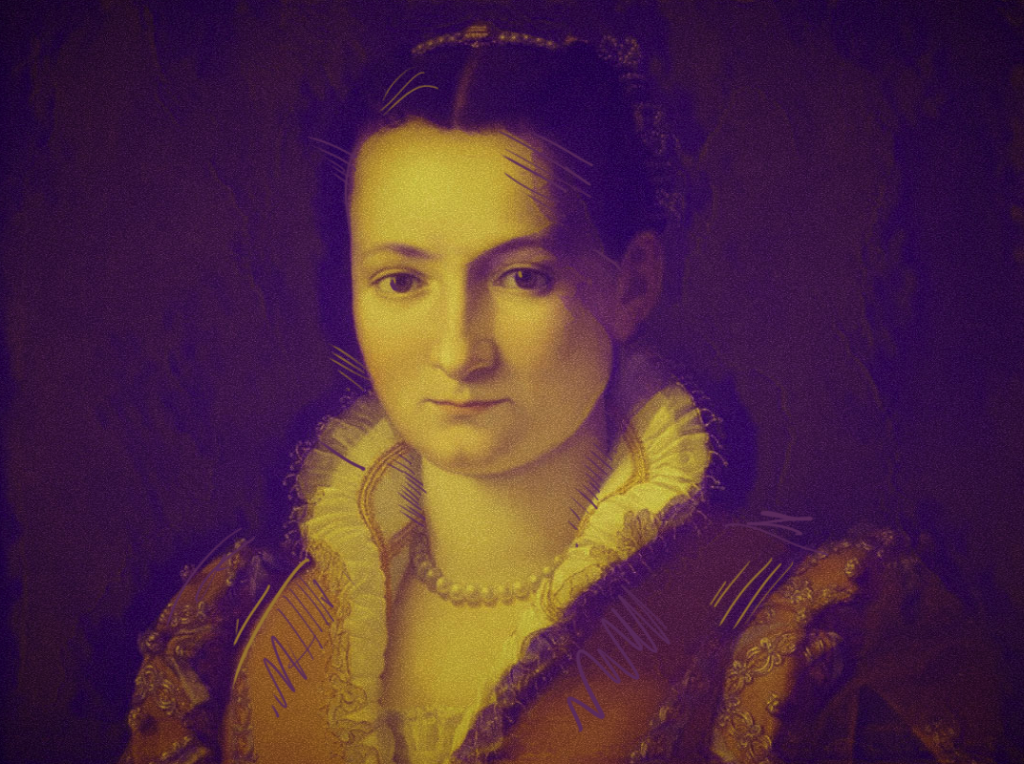From September 28 until October 8, Florence will host a mega-happening titled Florence Art Week. It includes the staging of 44 events, involving 29 cultural institutions such as Palazzo Vecchio, the Novecento Museum, Palazzo Medici Riccardi, Uffizi Gallery, Palazzo Strozzi, Istituto degli Innocenti and the Marino Marini Museum, spread around 32 different places like the Basilica of Santa Croce, Palazzina dell’Indiano, Manifattura Tabacchi, Le Murate, Palazzina Reale and Villa Romana, to mention just a few. Museo Novecento is now presenting the Temptations, Torments, Trials and Tribulations exhibition by the contemporary British artist Cecily Brown, which will focus on a series of original works by the artist, inspired by the Torment of Saint Anthony, the earliest known painting attributed to Michelangelo Buonarroti. Until February 4, 2024, the staging of the events continues with a presentation of the recent work done on Bianca Cappello’s “camerino”, or study, in the Palazzo Vecchio. This little-known chamber was created specifically for the Grand Duchess of Tuscany towards the end of the 16th century as a place where she could indulge her passion as a collector. It features a small window behind a grate, where she could watch the goings-on in the Salone dei Cinquecento without being seen. The ceiling in the camerino is decorated in the Grotesque style of the day, populated with naturalistic and fantastical hybrid creatures in a landscape scattered with ruins.

The beautiful Bianca Cappello (1548–87) would be the protagonist of one of the most contested, yet longest, love stories during the Medici dynasty. Born into a wealthy Venetian family, she eloped with a penniless Florentine bank clerk when she was 15 to escape the unhappy life caused by her stepmother. In November 1563, the young couple escaped to Florence where they were married and had a baby girl called Pellegrina. Grand Duke Cosimo de’ Medici intervened to stop the Venetian government from arresting and forcing her to return to her hometown, but the life with her husband and his poor relatives remained miserable and one of drudgery. Riding by her house one day, Cosimo’s unpopular son and heir, Francesco, saw her in the window and, despite the fact he was married to the Holy Roman Emperor’s daughter, the plain but pious Archduchess Giovanna of Austria, he determined to take her as his lover. Rewarded with a job at court and property, Bianca’s husband did not object, but he was murdered in Florence after a street brawl over a woman in 1572. This led to gossip that Bianca and Francesco may have had something to do with his demise.
Following Cosimo’s death in 1574, Francesco succeeded his father as grand duke. Heedless of his wife’s protests, he restored a palace for Bianca in via Maggio and built a secret passage connecting it to the royal palace in piazza Pitti. In 1576, Bianca gave birth to a son, Antonio de’ Medici, whom Francesco did not initially acknowledge, still hoping for a legitimate male heir from his wife. In 1578, Giovanna died after falling down the stairs while pregnant with her eighth child, who also died as a result of the accident. Francesco secretly married Bianca a few days later and, on June 10, 1579, a lavish wedding ceremony was celebrated with magnificent public festivities, which cost him the huge sum of 300,000 ducats. On this occasion, as Francesco’s legitimate son had died previously, Antonio was finally acknowledged as the grand duke’s son. Bianca was not without enemies and detractors at court, however, the most powerful of whom was Francesco’s brother, Cardinal Ferdinand, who hated her and begged his sibling to exile her, even insinuating she was a witch.
On October 8, 1587, while the couple were staying at their villa in Poggio a Caiano in the company of Cardinal Ferdinand, who appeared to have taken some steps towards a reconciliation, Francesco began to feel unwell and was feverish. The same symptoms soon affected Bianca. Francesco died on October 19, followed 11 hours later by Bianca on October 20. In the meantime, the 38-year-old Ferdinando had rushed back to Florence, taken possession of the two Medici fortresses and given orders at Palazzo Vecchio as the new grand duke. While rumours abounded that the couple had been poisoned with arsenic, research with DNA testing in 2010 has shown that they probably died of malaria. Francesco’s body was carried with pomp and ceremony to the Basilica of San Lorenzo, where he was buried alongside his first wife. No such honours were accorded to Bianca and, to this day, her burial place remains unknown. Furthermore, Ferdinando did everything possible to denigrate and erase all memory of her, replacing her coat of arms, destroying her portraits and furniture, and depriving her children of their rightful heritage, including forcing Antonio to join the Knights of Malta, meaning he could never marry. Only recently have some historians looked at reassessing Bianca’s reputation.







